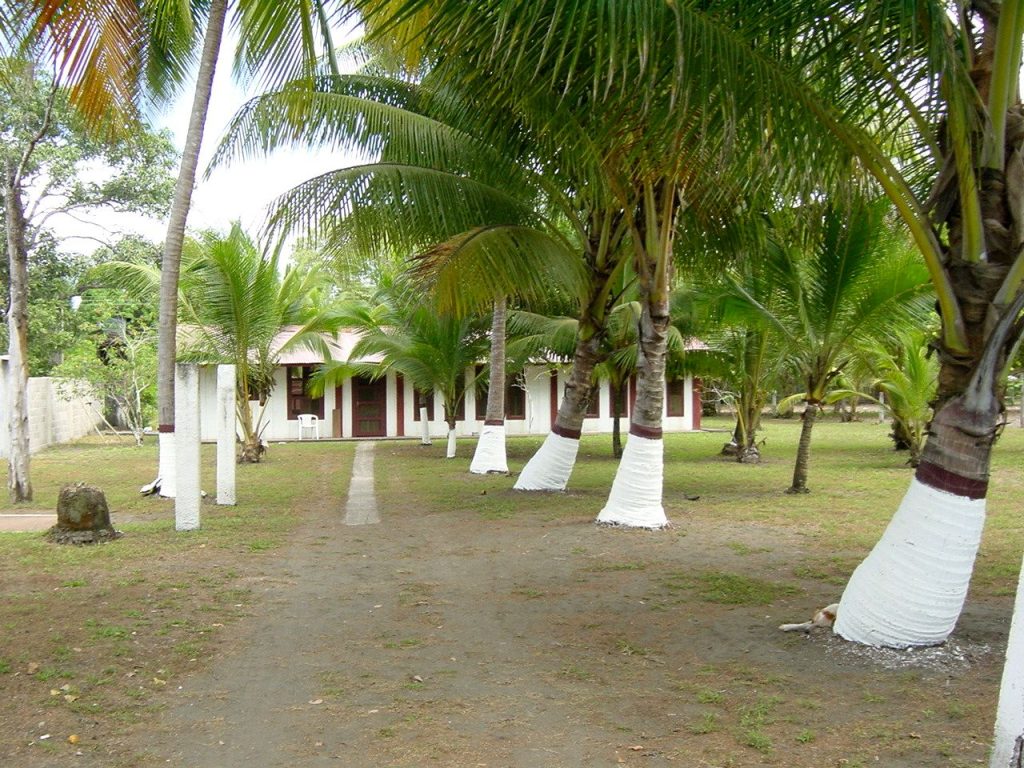
My first week in Costa Rica flew by as we began to make our drive south towards the Pacific Coast. It felt great to arrive at our beach house for an afternoon of relaxation and then to host a bonfire for our neighbors in the evening. Cheffy cooked an amazing meal for us and we watched a couple of movies before turning in. We had a big day planned with a day of surfing and exploring Manuel Antonio Park in Quepos, about an hour drive from Playa Palo Seco.
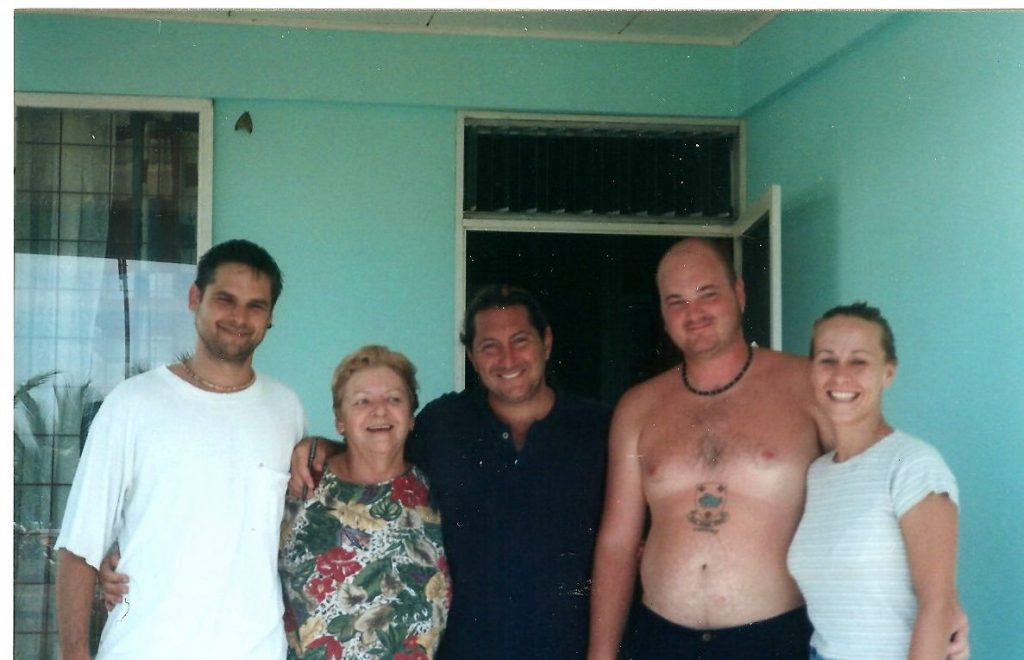
We stopped by to see our neighbor Maria to see if she needed us to pick up anything from the grocery on our way back. She had decided that she had a freezer full of quick and easy prepackaged meals and a a refrigerator stocked with Imperial beer. She should be good for a couple of days.
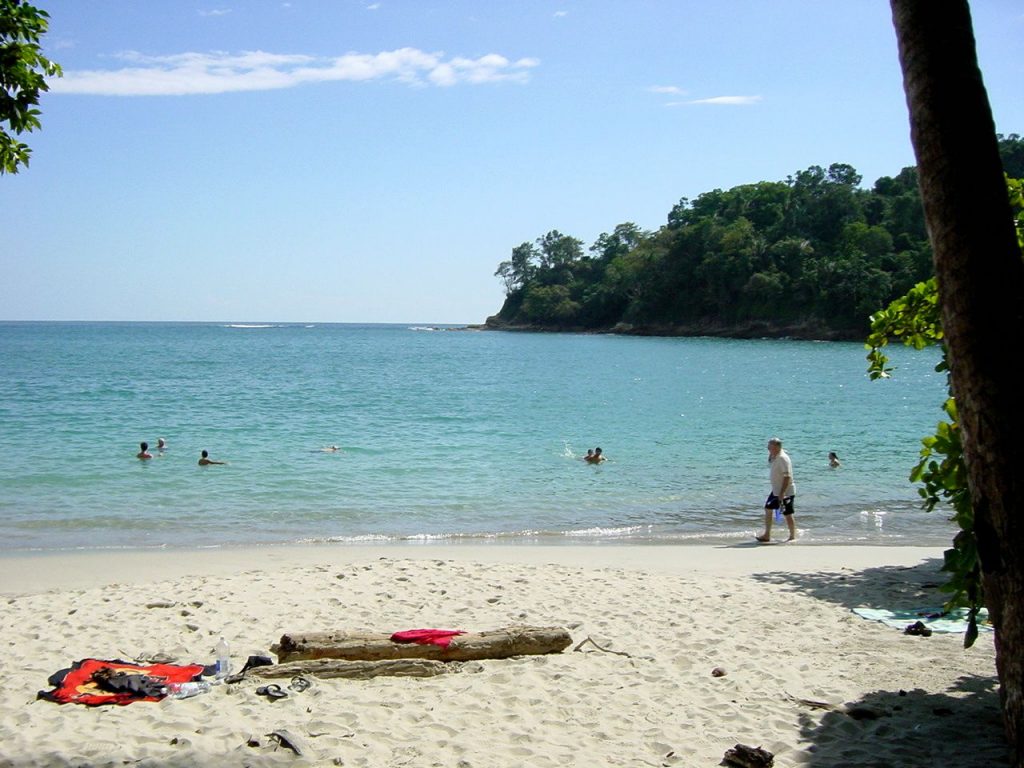
Known for its white sandy beaches and outdoor bars, the sleepy town of Quepos is most known for its local park full of monkeys and sloths. We were so excited to take a few hours to explore Manuel Antonio National Park to interact with the white faced capuchin, hired a local guide and broke out our binoculars to find the elusive three-toed sloth.
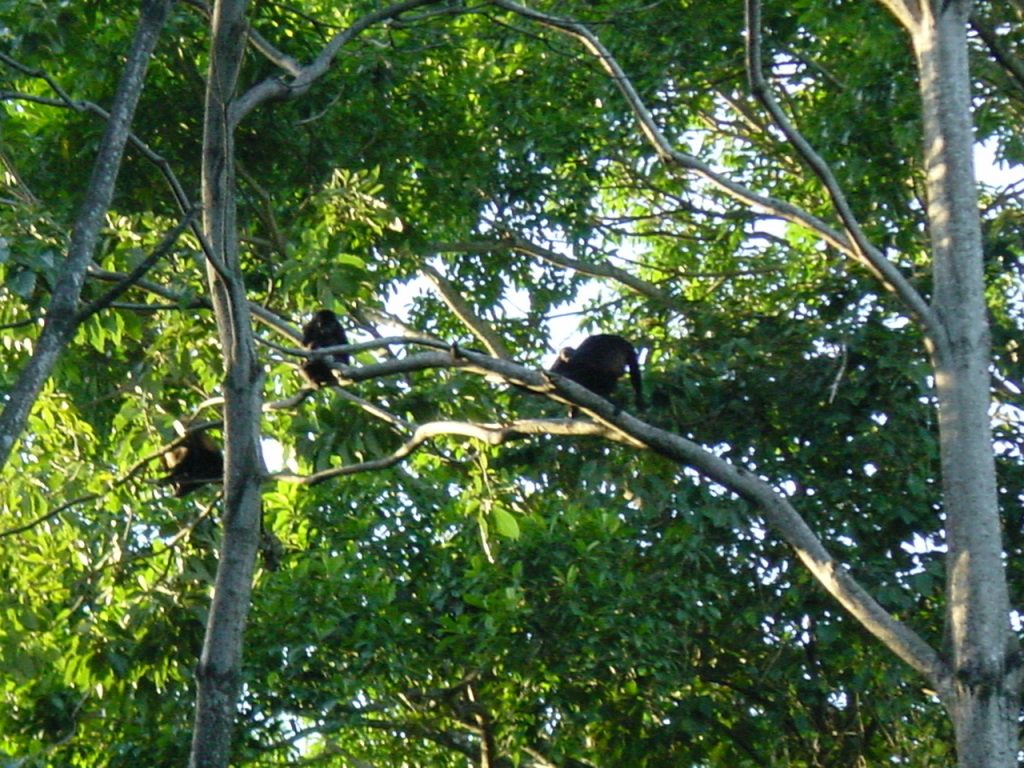
As we walked the main path through the park, we felt as though we were being followed by the same troop of monkeys at the start of our adventure. These cheeky capuchins have become accustomed to humans and love to interact. Whether you find it charming or a bit invasive, the adorable primates are determined to be center stage.
Most white-faced monkeys travel together in numbers that reach between 18 to 20. We learned from our guide that it was mating season and that the gestation period lasts for close to 160 days. Their diet consists of both plants and animals such as nuts, fruits, insects, birds, squirrels, lizards and tree rats.
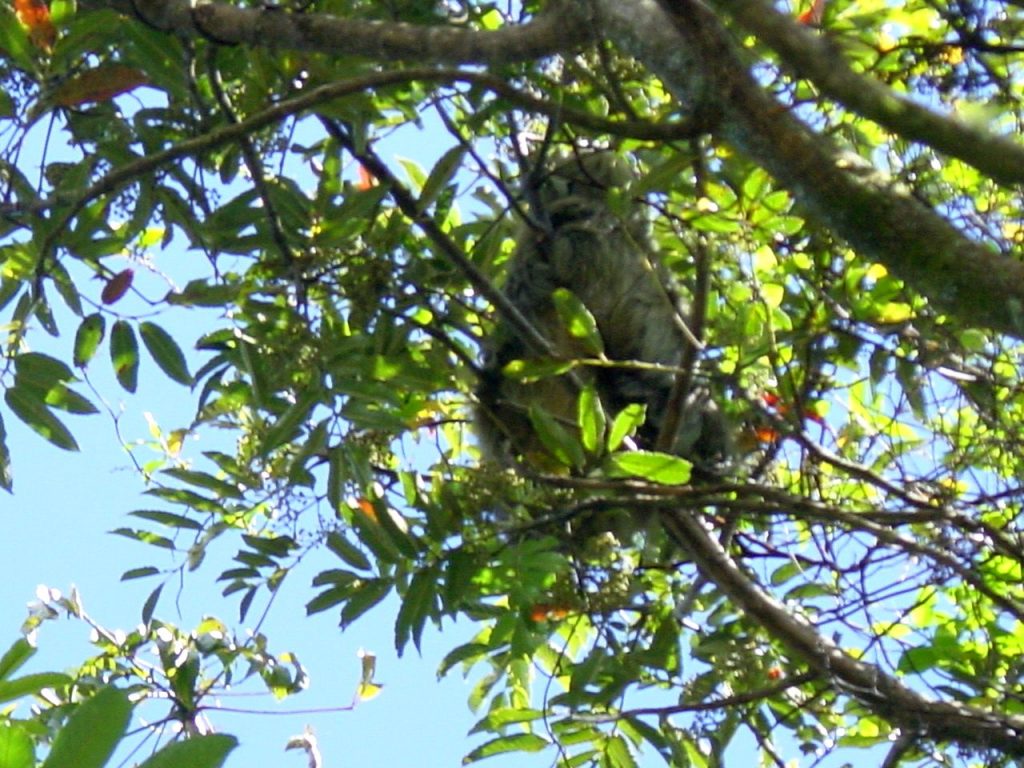
The two-toed sloths, on the other hand, could care less about their surroundings and stay high towards the top of the trees to maintain their privacy. Because they are nocturnal, these “smiling” sloths are very difficult to find. The sloths are synonymous with laziness, but in fact, they do as least they can to conserve energy. It takes nearly two weeks for a meal to be digested for the sloth and lucky for them, their diet consists of tree leaves and branches. It is rare to find a sloth near the ground as they only leave their treehouses about once a week to relieve themselves. One of the easiest ways to spot a sloth is to hire a guide, while some find sloth spotting easier on a night hike when they are wide awake.
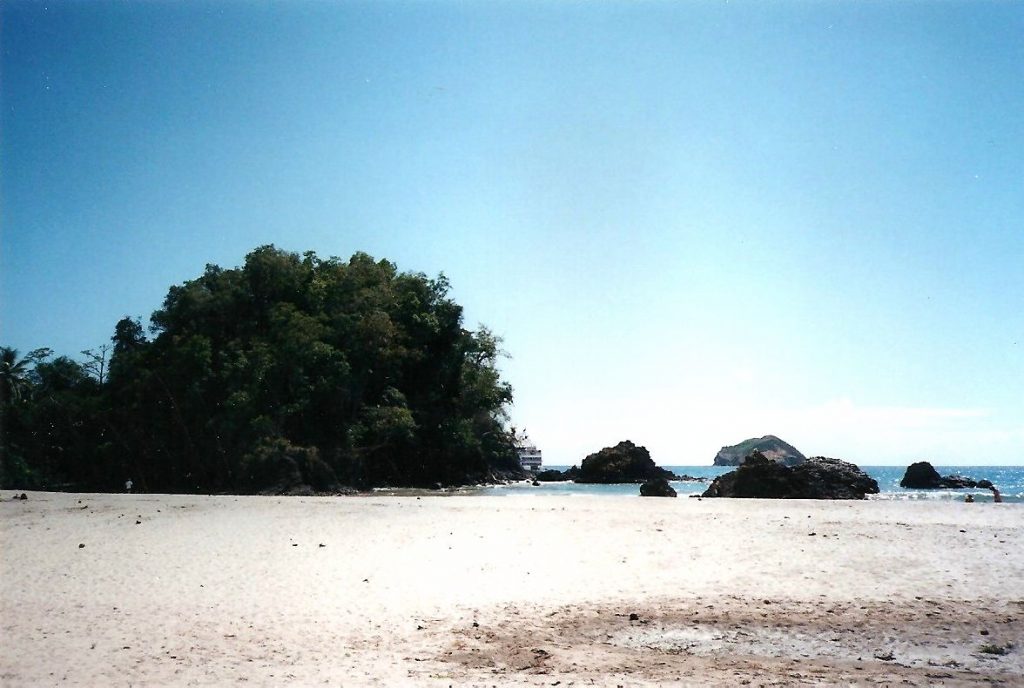
Hiking the Punta Catedral brought us to the park’s island, where we could easily see the diversity of the park. From its snow white beaches, life sustaining rain forest and colorful coral reefs, we decided to cross over a small stream of water to reach the stunning isle.
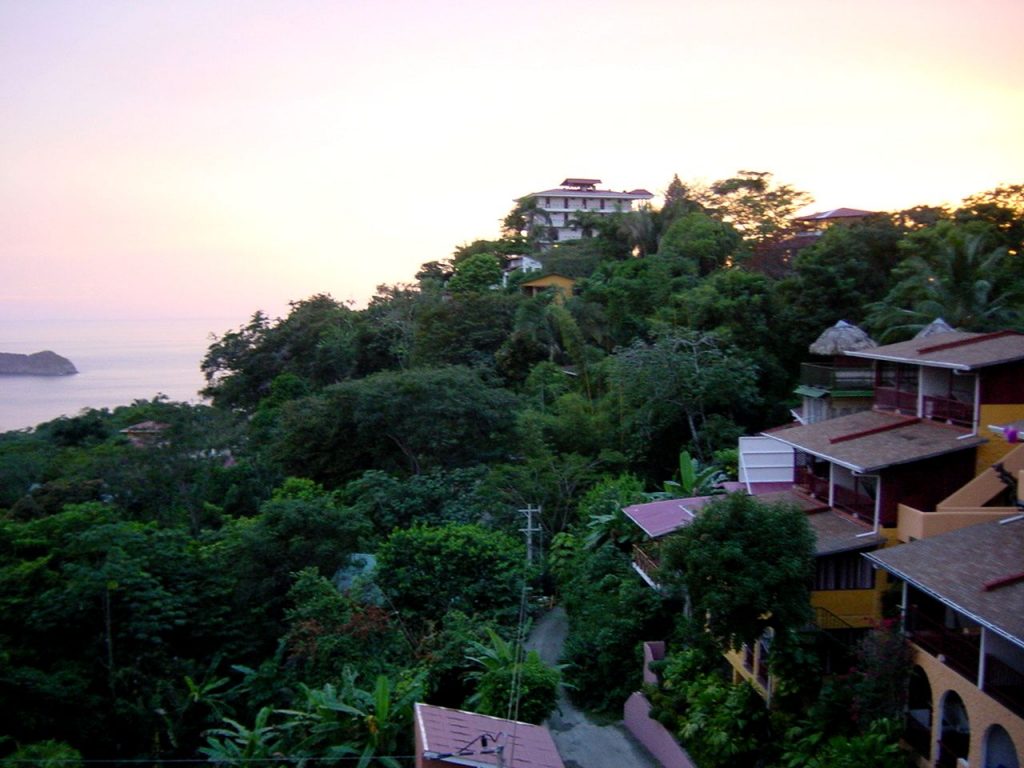
Nearly a half a million visitors explore Manuel Antonio National Park each year and it has recently opened its elevated trail. Each year we would make our pilgrimage to one of Costa Rica’s most visited attractions to practice spotting sloths and tracking monkeys. We would end the day watching the sunset from our local friends’ home and reflecting on our spectacular adventure would agree that this is Pura Vida.
Have you had the opportunity to visit Manuel Antonio National Park? What was your favorite part of the day? I would love to hear about your experience if you would kindly leave a message in the comments section below. Many thanks for reading through one of my favorite places to visit in the world and wishing you many Happy Travels.
What to See and What to Do:
Manuel Antonio National Park
Quepos, Puntarenas, Costa Rica
Telephone: 506 2777 3339 or 800 280 2597
- Admission Fee: $18.08 for adults; $5.65 for children ages 2 – 12; children under the age of 2 is free
- Hours: Daily from 7AM to 5PM with the exception of Tuesday. The park is open on holidays unless the holiday falls on a Tuesday. The nearby beach closes at 3 and the park rangers will notify the remaining visitors that they will need to leave the park by 4PM, starting towards the exit by 3:30PM.
- Amenities: Guided tours ($51 for adults, $35 for children); Private tours ($71 for adults and $55 for children) The tours last for about 2.5 to 3 hours. You can purchase your tickets through a third party (i.e., Viator) that will provide a guide. Guides are available to show you around the park. They will tell you about the flora and fauna as well as show you were the animals are hiding within the parks. Most tours will last only a couple of hours, but should you want to stay longer, the guide can explain how to take the bus back or where to grab a taxi. Independent guides should wear their badges showing their ICT certification. For 2, expect to pay $20 per person for 2 hours and if they charge more, you can easily find another guide that will accept the $20 per hour/per person rate.
- Parking: Parking is available at the park and there are several parking lots. Follow the sign at the entrance and an attendant will assist you with parking. Remember to note which parking lot you have parked your vehicle. Do not leave valuables in the car, roll up your windows and ensure the doors are locked. Pay for parking in Costa Rican colones, not American dollars. Depending on the season, you can expect to pay 3000 to 6000 colones. On your way to parking, look for restaurants and shops on the left and this will let you know that you are close. There may be attendants that will tell you that you must park in their lot, but this is a scam. After passing the shops and restaurants, you will see the Super Joseth convenient store. You will notice a small road to your left, so turn left here and past the Hotel Vela Bar to reach the parking lots. Drive carefully as this is a narrow road.
- Scenic View: The park’s animals…the sloths and monkeys in the wild.
- Length of Visit: 2 – 3 hours to include the beach
- Tips for Your Visit: Arrive early before the crowds. Tickets must be purchased online as they are not available at the entrance. If you arrive without a ticket, you will not be able to enter. The park only sells approximately 3000 tickets per day. December through April and June through August are high season, so purchase your tickets well in advance. The website provides instructions for purchasing the tickets and you can select the English language. The tickets are only valid for one day as there are no multi-day tickets available. Your ticket can only be used once, which means you will need to purchase multiple tickets for the dates you would like to enter. Ensure that you hire a certified guide who can point out the elusive sloths. You should ask for their ICT (Institute of Costa Rica Tourism) credentials. There will be scammers dressed in park ranger uniforms or fake badges and name tags. When you arrive at the park, bring a printed copy of your reservation (the reservation number or barcode) in addition to your passport. Should you not have your passport, you can show a copy of your passport for entry. Alcohol, guns, cigarettes, drugs and speakers are prohibited. Set your GPS or Google Maps to “Welcome Center Manuel Antonio” or “Hotel San Beda” for the correct directions.There are three bathrooms at the entrance of the park and three additional bathrooms within the park. There is one facility where you will find bathrooms, showers and changing booths. Visitors are not permitted to being food into the park. In 2023, the park added a cafeteria where visitors can purchase sandwiches, salads and drinks. There are also restaurants at the entrance of the park.
Where to Stay:
We stayed at our private residence located at Playa Palo Seco during our stay
Where to Eat:
Rico Tico Jungle Grill
Near Manuel Antonio Si Como No Resort & Wildlife Refuge
Manuel Antonio, Costa Rica
Telephone: 506 2777 0777
What to Eat:
- Arroz con Leche is translated to rice with milk and is a popular dessert in Costa Rica. Additional ingredients include milk, cinnamon, salt and lemon zest, making this a delicious end to your meal.
- Casado, which means marriage which is an interesting combination of meat such as beef, pork, chicken and fish as well as rice, beans, tortillas, fried platano maduro and salad. In addition, the dish also includes a fruit juice.
- Ceviche is raw fish that has been “cooked” with citrus juices.
- Gallo Pinto is a mixture of rice and beans with red bell peppers, onions, cilantro and other spices. The secret ingredient is the Salsa Lizano. It is a popular breakfast dish.
- Sopra Negra is translated to black soup, which is the base of this delicious soup. Included with the black beans, there are onions, peppers, tomatoes, soft boiled eggs and spicy spices.
- Tamales are similar to their Mexican cousin, but there are some differences, one of which is the wrapping. In Costa Rica, tamales are wrapped in banana leaves rather than corn husks.
What to Drink:
- Agua Dolce (sweet water): which is sweetened with cane sugar
- Cerveza (Beer): Imperial
- Guaro: sugar cane liquor which sneaks up on you. Cacique is the most popular brand.
What to Read:
- It’s Every Monkey for Themselves: A True Story of Sex, Love and Lies in the Jungle by Vanessa Woods
- Oro by Cizia Zyke
- Green Phoenix: Restoring the Tropical Forests of Guanacaste, by William Allen
- Monkeys are Made of Chocolate: Exotic and Unseen Costa Rica, by Jack Ewing
- Costa Rica: A Traveler’s Literary Companion by Barbara Ras, Oscar Arias
- The Year of Fog, by Michelle Richmond
Photo Guide for Costa Rica:
- Manuel Antonio National Park for wild animals such as sloths and monkeys
- Tortuguero National Park for amazing loggerheads and hawksbill
- Poas Volcano National Park for its impressive view of the interior of the volcano
Disclosure: Please refer to our blog disclaimer tab for more information.